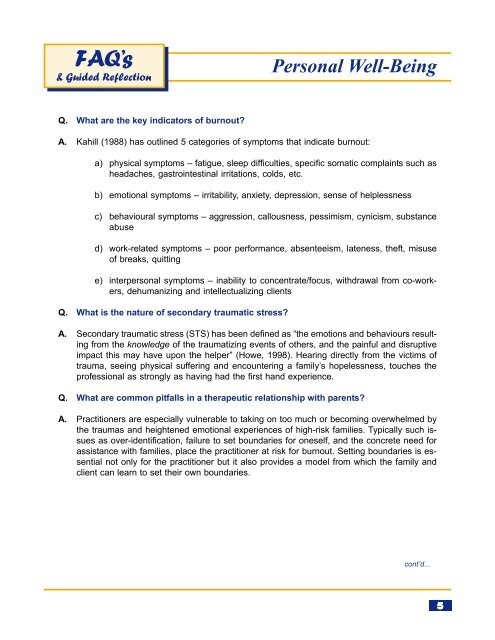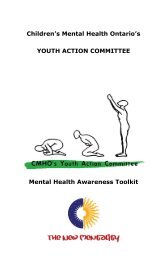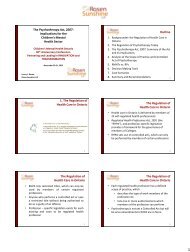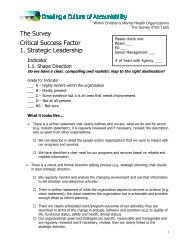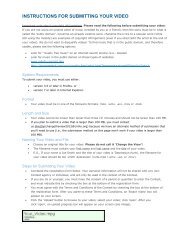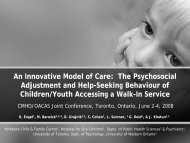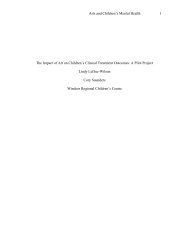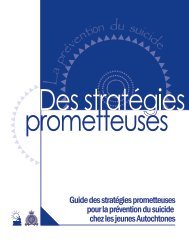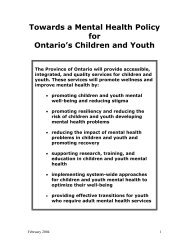Early Childhood Mental Health Treatment: Training Reference Guide
Early Childhood Mental Health Treatment: Training Reference Guide
Early Childhood Mental Health Treatment: Training Reference Guide
Create successful ePaper yourself
Turn your PDF publications into a flip-book with our unique Google optimized e-Paper software.
FAQ’s<br />
& <strong>Guide</strong>d Reflection<br />
Personal Well-Being<br />
Q. What are the key indicators of burnout<br />
A. Kahill (1988) has outlined 5 categories of symptoms that indicate burnout:<br />
a) physical symptoms – fatigue, sleep difficulties, specific somatic complaints such as<br />
headaches, gastrointestinal irritations, colds, etc.<br />
b) emotional symptoms – irritability, anxiety, depression, sense of helplessness<br />
c) behavioural symptoms – aggression, callousness, pessimism, cynicism, substance<br />
abuse<br />
d) work-related symptoms – poor performance, absenteeism, lateness, theft, misuse<br />
of breaks, quitting<br />
e) interpersonal symptoms – inability to concentrate/focus, withdrawal from co-workers,<br />
dehumanizing and intellectualizing clients<br />
Q. What is the nature of secondary traumatic stress<br />
A. Secondary traumatic stress (STS) has been defined as “the emotions and behaviours resulting<br />
from the knowledge of the traumatizing events of others, and the painful and disruptive<br />
impact this may have upon the helper” (Howe, 1998). Hearing directly from the victims of<br />
trauma, seeing physical suffering and encountering a family’s hopelessness, touches the<br />
professional as strongly as having had the first hand experience.<br />
Q. What are common pitfalls in a therapeutic relationship with parents<br />
A. Practitioners are especially vulnerable to taking on too much or becoming overwhelmed by<br />
the traumas and heightened emotional experiences of high-risk families. Typically such issues<br />
as over-identification, failure to set boundaries for oneself, and the concrete need for<br />
assistance with families, place the practitioner at risk for burnout. Setting boundaries is essential<br />
not only for the practitioner but it also provides a model from which the family and<br />
client can learn to set their own boundaries.<br />
cont’d...<br />
5


